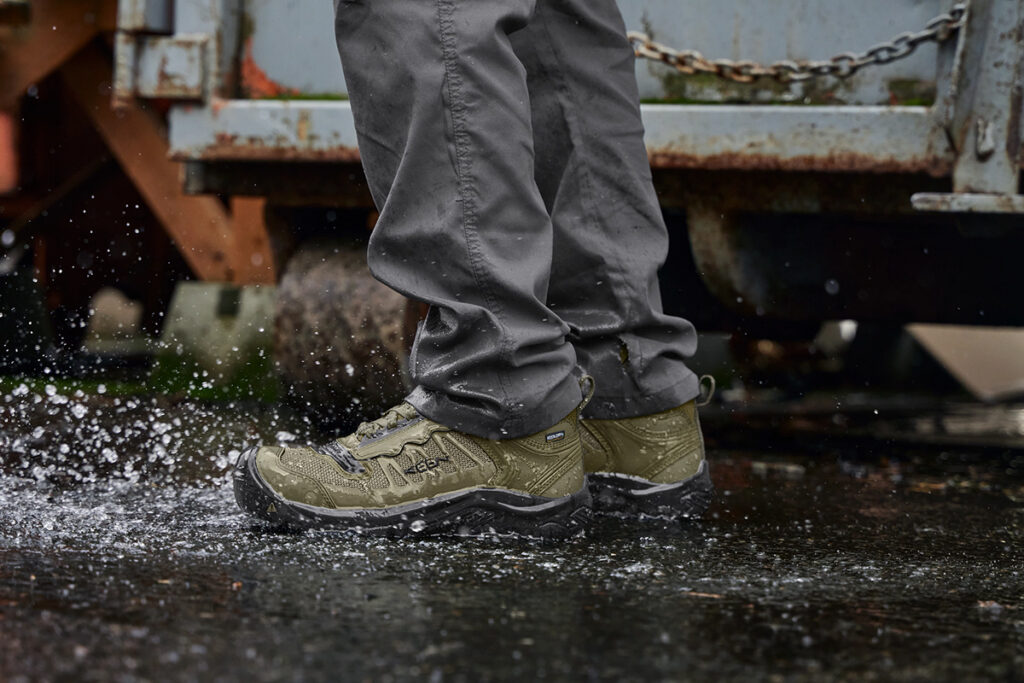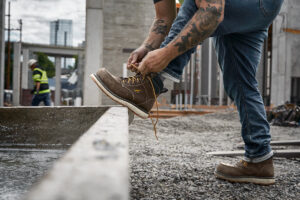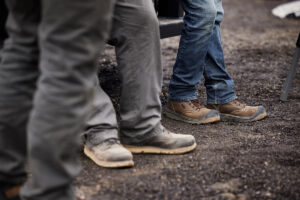How to Select and Maintain Your Next Work Boots

Knowing when it is time to replace your boots can be critical for work safety, foot health, and productivity.
By Kevin Oberle, Contributor
We’ve all been there – that moment when you realize your favorite work boots are overworked and ready to be retired. While it may be tough to say goodbye to a favorite, well-worn pair, knowing when it is time to replace your boots can be critical for work safety, foot health, and productivity. After all, work is hard enough; having a foundation for safety and comfort is often the first step in improving your overall work experience.
When it comes to selecting new safety footwear, there are more options than ever. Safety and material advancements have revolutionized the way we think about (and shop for) work boots. However, with some planning and know-how, finding your next pair of safety boots may be less work than you think.
Knowing When it is Time to Replace

Safety and material advancements have revolutionized the way we think about (and shop for) work boots.
Having proper and well-maintained safety footwear is critical in helping to prevent injuries on the job site. If you are wondering whether it is time for new boots, look no further than your current ones. Here are a few clear indicators that it is time to purchase a new pair:
- Damaged toe: If the protective toe in your boot is damaged, it must be replaced. This is also true after the toe cap takes a blow, even if it does not look visibly dented. While damage to a steel or aluminum toe cap might be readily apparent after significant impact, this is not always the case with composite or carbon-fiber toe caps and it is possible that micro-cracks may have formed. If a toe cap is damaged, it is unable to do its job of protecting your toes. Anytime your toe cap takes an impact, consider it a job well-done and replace them immediately.
- Cracks or holes: These are two clear signs your boots are worn out and ready to be replaced. This is especially important if you can see the safety toe cap through the leather at the forefoot of your work boot. Even if there are only the smallest of cracks, they can grow over time, allowing dirt, mud, and particulate to enter the inside of the boot and create even more damage. Additionally, if the leather is cracking or drying out at the highest flexion point of your forefoot, the integrity of your work boot might be jeopardized and it’s time to seek out a new pair.
- Delamination: Delamination of the outsole occurs when the cement construction of a boot wears out due to either the age of the glue or exposure to caustic materials. If your outsole is beginning to separate from the boot, it’s time to replace. The best way to combat premature delamination is to remain aware of caustic materials that might come into contact with your boots. Otherwise, look for footwear with either direct-attach construction or a Goodyear welt. These construction methods are designed to withstand more caustic work environments and materials.
- Too much flexibility: While some amount of flexibility in a work boot is beneficial, there is a point when too much flexibility creates safety risks. A boot that is overly pliable could mean the structural integrity has been compromised.
- Falling apart at the seams: If you can see the seams of your boots falling apart, it is time for a new pair. These boots can no longer provide the protection that safety footwear requires.
What to Look for in Your New Boot
 The last decade has seen huge advancements when it comes to safety footwear. High-tensile fabrics have introduced sportier, more athletic styles to the market. Thinner, stronger toe caps reduce bulk without sacrificing style. Better rubbers and plastics have revolutionized the idea of slip resistance.
The last decade has seen huge advancements when it comes to safety footwear. High-tensile fabrics have introduced sportier, more athletic styles to the market. Thinner, stronger toe caps reduce bulk without sacrificing style. Better rubbers and plastics have revolutionized the idea of slip resistance.
Step one to shopping for safety boots is understanding what requirements you may have on the job. Your foreman or safety manager can help inform you of any specific safety requirements. From there, there are a few important features to consider:
- Toe protection: Some professions and job sites require workers to have footwear with a safety toe, and it is important to understand which safety toe cap is the best fit for the task at hand (or shall we say, foot). While many boots feature safety toes made from traditional materials such as steel or aluminum – which are still excellent options – advancements in materials like carbon fiber and composites have introduced safety toes that can be metal-free (an important feature if you are required to pass through metal detectors daily), are non-conductive, and are up to 15% lighter than steel. These safety toe cap options have become much more popular in recent years.
- Slip resistance: A universal danger on any job site is the potential of slipping or falling. According to the Bureau of Labor Statistics, slips, trips, and falls result in nearly one third of fatalities in the construction industry[1]. Boots with slip-resistant outsoles disperse liquid quickly and maximize surface area to improve sure-footedness. Boots with multidirectional lugs help provide better traction in mud or even on ice, which reduces slipping hazards. Slip-resistance may sound simple, but knowing the correct outsole tread design for the work site can improve your overall safety and stability.
- Safety enhancements: Depending on the profession, there are a variety of footwear options with safety features designed for specific trades. Whether it is reflective webbing for working at night in low lighting, Kevlar fiber for resistance against open flames, or an EH-rated outsole for electric shock protection, there is likely a boot with safety features designed to enable success for your specific trade.
Shop Smarter
When shopping for your work boots, we recommend trying on boots at the end of the day when your feet are naturally more swollen and at their largest. This will ensure your boots don’t feel tight after a long day on your feet. While you probably know your shoe size, it is good practice to have your feet measured to ensure a better fit. A person’s feet often differ in size and we regularly encounter men and women who have been wearing the wrong size for years.
Additionally, come prepared with the type of thick, supportive socks you wear on the job site, as this impacts how boots fit. Socks made from natural materials like Merino wool or performance blends help wick moisture and keep feet warm and dry.
Maintaining Your Boots
While it is important to always keep an eye out for these signs of wear, proper care and maintenance can help increase your work boots’ lifespan. Here are some ways to take care of your boots:
- Unlace boots before taking them off: It may be inconvenient to untie your boots, but it is still important. While it is tempting to just kick your boots off after a long day, this bends the heel collar – which can cause pressure points (and blisters) – while also placing strain on the laces and pulling at the stitching.
- Regularly clean your boots: Over time, mud can break down stitching in your boots and cause wear to occur more quickly. When boots get muddy, it’s good practice to wait until the mud dries then brush off with a soft brush.
- Properly store your boots: Work boots left in a bag, backpack, car, or trunk become incubators for mold, fungus, and bacteria, which can cause serious problems to your health. Consider a shoe rack or storage locker as proper storage options.
- Alternate boots: Just like other types of footwear, if you wear the same boots every day, they will wear out more quickly. By rotating two or three different pairs, you can extend the lifespan of all of them. As an added bonus, rotating boots gives them time to dry out and ultimately smell better.
Safety starts with a good foundation from the ground-up. Work footwear is an important part of PPE and investing time in the selection and care of your work boots will positively impact your workday at every step.
Kevin Oberle is Senior Director of Global Insights & Engagement, KEEN Utility (keenutility.com).
[1] U.S. Bureau of Labor Statistics (2022, May 4). A look at falls, slips, and trips in the construction industry. https://www.bls.gov/opub/ted/2022/a-look-at-falls-slips-and-trips-in-the-construction-industry.htm



